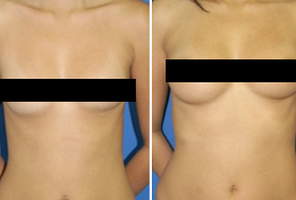As knowledge of plastic surgery techniques expands and technology changes, so do plastic surgery procedures. Advances in surgical procedures have opened up to include several different face lift techniques which address each individual patients needs more specifically. The concept of rhytidectomy surgery remains the same; which is to correct and tighten loose skin and muscles, as well as remove and reposition fatty tissues to give a more youthful appearance.
Face Lift Techniques
However, there are several innovative methods built upon existing techniques that are designed to achieve the specific results patients are requesting. Working with your qualified surgeon will help you to determine which procedure will best benefit you is the best way to choose a procedure.
- SMAS (Superficial Musculoaponeurotic System)
Known as the gold standard in face lift approaches, this technique builds on existing traditional face lift methods by concentrating on the thin underlying connective tissue layer called the superficial musculoaponeurotic system. Tightening this foundational tissue gives a smoother and improved shape without noticeable tension in the skin. In particular, this method works well for people who are most concerned with the folds around the nose and mouth called nasolabial folds. - Subperisteal Lift
Some surgeons believe this procedure gives patients a more long-lasting face lift, because it deals with the tightening of the deeper tissues of the face. This method is done endoscopically, and can cause more swelling and bruising. By releasing the tissues off of the bony layer it believed that elevating and reshaping results will be improved. Most surgeons do not acknowledge a significant difference in results from the SMAS technique. - Deep Plane Face Lift
The deep plane system is a more invasive process that reshapes the whole face including the neck, brow and both upper and lower eyelids. By lifting the skin, facial tissues, muscle and fat all in one continuous section, deep plane lifts can affect more of the face area. While this procedure can accomplish more, it is considered very invasive and can take more time for recovery and is generally not used frequently. - Mid-face Lift
The mid-face lift, also known as the cheek lift, focuses on the area beginning below the eye to the lower cheek area. As the area between the lower eyelid, cheek and nasolabial fold ages, this area descends and cannot always be improved by a regular face lift procedure. The cheek lift concentrates on improving the loose skin, fat deposits and tissues of this particular area. This procedure is specifically geared toward the cheek area, and does not address the aging signs of brow, jaw line or neck. - Threadlift or Feather Lift
This newly approved procedure is considered the least invasive of face lift methods. The threadlift technique uses patented self-anchoring polypropylene threads which have been used safely in surgical procedures for decades. These contour threads lift and suspend tissues in the facial area by self-anchoring threads with barbs that attach to underlying tissues. This method is safe and less invasive than other methods, and yields conservative, natural results. Because this is a newly approved technique, it may take several years to determine the long-term results of this type of cosmetic surgery.
The type of face lift you undergo will depend on your surgeon and the method he or she is most practiced in and most comfortable performing. To find out about your surgeon’s preferred technique and the specific benefits and risks of the procedure, schedule a consultation.

